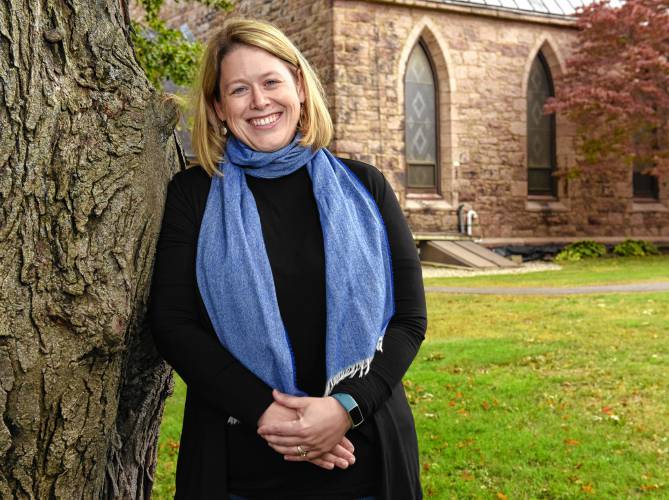Today, I’ll offer the second teaching sermon on the Christian Bible, focusing on the Christian Scriptures. These sacred texts are better known in Christian circles as the New Testament, and are sometimes referred to as the Second Covenant. You’ll hear me use the label Christian Scriptures, as I am phasing out my use of the label New Testament, because of its implied superiority. Whether implicitly or explicitly, many of us were taught prejudicial ideas about the nature of God as depicted within the Christian Bible.
It is fairly common to hear churchgoers of every denomination say something along the lines of: “I don’t like the Old Testament. It is all about a God of wrath focused on a bunch of laws. I like the New Testament, which proclaims a God of love and grace.” This prejudicial framework has its origins in the early second century, when the teachings of Marcion encouraged Christians to reject the God of the Hebrew Scriptures.* The early Church ultimately rejected Marcion’s teachings as heresy, as should we. In our tradition, we use the New Revised Standard Version of the Christian Bible, featuring twenty-seven pieces of early Christian writing. Many of us grew up believing these were all of the early Christian writings. In actuality, these are what early church leaders believed to be the best selection of those writings.** So, let’s back up. Preceding any writing was the life of Jesus of Nazareth, whose teachings and actions were so extraordinary that a movement within Judaism was born. The story of Jesus’ life and teachings, his death and resurrection were shared by word of mouth, and in the subsequent years small bits were written down here and there. Roughly 13-16 years after Jesus’ death, Paul began to write letters to small communities of Jesus’ followers scattered throughout the Roman Empire.** Around the time Peter and Paul were killed and martyred, roughly 35-46 years after Jesus' death, the Gospel of Mark began to be written.**These are all first generation writings, and are often referred to as coming out of the apostolic tradition, because they were composed by those with a connection to Jesus or Paul; those who led some of the earliest churches.** These writings were shared liberally between communities, copying and sharing so the early Church might all grow in faith together. Roughly 50-70 years after Jesus’ death, the second generation of Christian writings began to be written.** These include Matthew, Luke, John, Acts, and letters written by followers of original apostles.** Often letters in this second generation were written in honor of the original apostles and Paul, bearing their name and giving them credit. This is one of the many reasons we might find Paul’s teachings contradictory. Different authors were composing them in his name with different understandings of the Jesus Movement, the nature of God, and what it means to be the Church. This was true for the vast majority of writings that were being written in the second and third generation, which often featured wildly different theologies. Some were letters, some were different books of acts, and there were several gospels. These include at least two infancy gospels imagining Jesus’ early childhood and youth, as well as the Gospel of Mary, portraying the important role of women in the early Church. Meanwhile the early Church was evolving from a movement within Judaism to its own distinct religion. It became important to determine which texts would be included in the Christian canon, which refers to the writings widely accepted as scripture.** The Christian Scriptures as we know them today were not fully determined until the early fifth century. The writings chosen were seen as compatible with apostolic tradition, while at the same time maintaining some breadth and diversity of opinion. Which is yet another reason for contradictory teachings. Some important things for us to remember about the Christian Scriptures:
Alright - are you ready for a whirlwind tour of these twenty-seven writings? Here we go. Scholar Mark Allan Powell suggests thinking about the Christian Scriptures in seven categories:**
Whew! We made it through. I would encourage us each to do some reflecting on our own experience with the Christian Bible.
* Amy Jill-Levine and Marc Zvi Brettler in The Bible With and Without Jesus, pg 8, 14. ** Mark Allan Powell in Introducing the New Testament, pg.41, 60, 61, 63, 64. *** Jerome H Neyrey commentary in The New Oxford Annotated Bible New Revised Standard Version, pg. 1880. ****Jennifer K. Berenson commentary in The New Oxford Annotated Bible New Revised Standard Version, pg. 2052. *****Margaret M. Mitchell commentary in The New Oxford Annotated Bible New Revised Standard Version, pg. 2085. ****** Jean-Pierre Ruiz commentary in The New Oxford Annotated Bible New Revised Standard Version, pg. 2155. Comments are closed.
|
We are blessed to have a diversity of preaching voices in our parish. Our guild of preachers is a mixture of lay and clergy. We hope you enjoy the varied voices. Meet our Preachers
All
Archives
July 2024
|
